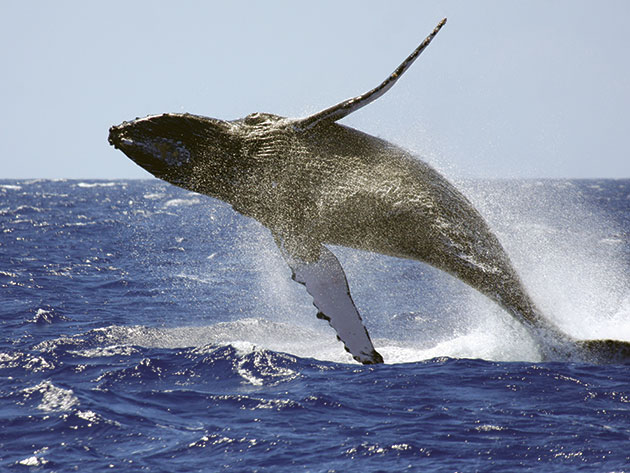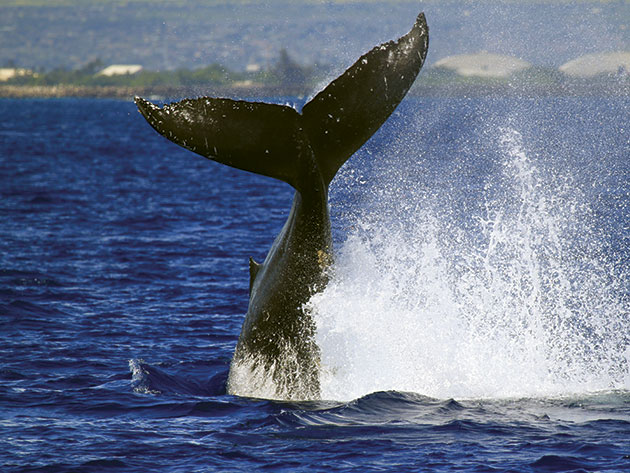There She Blows!
Hawai’i is the humpbacks’ seasonal home.
The majesty and grace of the humpback whale as it travels through Hawaiian waters is a sight to behold. For many, the arrival of the humpback whale (they travel to the sheltering waters off Hawai’i shores from Alaska each November to mate and give birth to their young) mark a change in Hawai’i seasons much like the leaves changing colors signals autumn in other locales. The first humpbacks of this season were spotted off Maui shores—two miles from Molokini—on October 5, 2013.
The kohola, or humpback whale, holds a place of majesty in Hawaiian legend as well. The creature is mentioned in the Hawaiian creation chant (called the Kumulipo). There are petroglyphs that depict the kohola, as well as place names that honor them. They were thought to be sacred, with some families noting them as their ‘aumakua, or guardian. Hawaiian ali’i (royalty) would adorn themselves with the precious ivory of whale teeth.

While revered by the ancient Hawaiians, it was only a century ago that the humpback whales were coveted for another reason: whale oil. Hawai’i’s whaling industry made its home on Maui, and—while almost universally condemned as a practice now—it contributed to the economy of the island.
Most recently, the focus has been on preserving and learning about the humpback whale. Congress established the Hawaiian Islands Humpback Whale National Marine Sanctuary in 1992 with the purpose of protecting these marine mammals’ natural habitat. The efforts seem to be making a difference: It’s estimated that as many as 10,000 humpbacks make their way through the sanctuary each year.
You can catch these creatures of the deep in action on a whale-watching cruise—most offer round-trip transportation to and from Waikiki hotels. Some things to look for: spy hops (when a whale’s head juts out of the water); blows (the whale is breathing through its blowhole, resulting in a water spray); pec slaps (the whale slaps its fin on the surface of the water); tail slaps and the ever-thrilling breach (the whale propels vertically out of the water).

A whale-watch tour may give great insight on these behaviors and more. The humpback’s haunting songs are fascinating and many tours give guests a chance to hear these complex arias. Many tours also feature on-board naturalists who can guide guests on what to look for and provide interesting information on the whales and their habitat.
Atlantis Navatek Cruises (800) 381-0237
Star of Honolulu (808) 983-7827
PHOTOS: COURTESY NAVATEK









